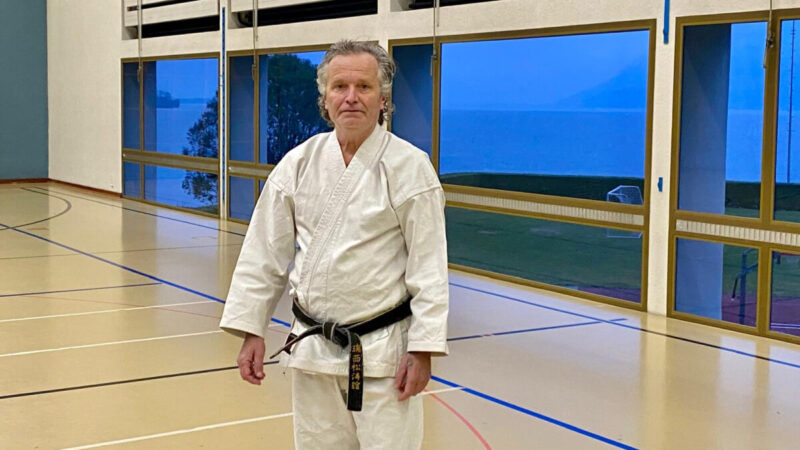The principle, one of the principles, could be contained in a passage from Luc Lang’s novel ‘Story of the Struggle’, which recounts the author’s passion for karate: ‘The teacher, the sensei, is not one who speaks and explains, but who shows and corrects. It is through gestural language that the line of education is weaved”.
The master teaches in the Dojo, which in Japanese means ‘Place (jo) where the Way (do) is followed’. The ideogram “do” has the meaning of “path, path” understood as personal growth.
Perhaps not everyone knows, and the aim of this newsletter is to tell it, that there is also a small Dojo in Brissago, where Giorgio Di Resta, the third Dan black belt teacher, has been teaching since 2006.
"Our company, affiliated with Suisse Shotokan Karate (SSK), is non-profit and promotes healthy physical and mental activity," explains Di Resta. Everyone can practice karate, regardless of age, say from 8 to 80 years old, each according to their own possibilities and physical condition. The style we teach is traditional, based on self-defense using only hands and feet.”
In Brissago the courses take place in the municipal gym, on the ground floor of the school center, on Mondays from 18:00 to 19:00, on Wednesdays at the same times and on Fridays from 20:00 to 22:00. Each member of the Brissago Dojo then has the opportunity to attend national technical, special and combat training internships organized by Suisse Shotokan Karate.
On the website of the Dojo you will find the basic information and contacts of the master.
"I am very happy that Brissago, thanks to Maestro Di Resta, also offers the possibility of practicing a sporting discipline such as karate, a technique of self-defense," says Alessio Franconi, municipal director of the Sports Dicastery. It is a workout that involves the whole body and has several benefits for the mind as well. A martial art that everyone can practice and that I strongly recommend to try, because it is never too late to start ...”.
Karate, or more properly karate-dō, which means ‘empty hand path’, is a martial art native to Okinawa Island (annexed to Japan in the late 19th century), and has been influenced by Chinese fighting techniques. The spread of this martial art outside the island began in 1922, when the Japanese Ministry of Education invited Master Gichin Funakoshi to Tokyo. Two years later the first university karate club was born.
Over a hundred years have passed since then and karate has spread throughout the world. It has become a sport of competition and Olympic discipline, but for many practitioners it remains mainly a path of growth: Like all martial arts that have the suffix Dō, it has as its ultimate goal the improvement of the person and spiritual elevation through physical practice and the refinement of techniques. In addition, karate is closely linked to Zen Buddhism, as both disciplines are based on concentration, awareness and meditation.
Shotokan, the most popular modern style in the world was founded by Funakoshi (with technical contributions from his son Yoshitaka) around the 1940s. Although practiced in numerous variants and by numerous schools, with different technical variables, it is characterized by positions tending to be low, stable and strong. The name means "House (kan) of Shoto (breeze in the pine forest)", the pseudonym with which Funakoshi signed his poetic compositions.
“The mind is one with heaven and earth. The body's circulatory rhythm is similar to the sun and moon. The law includes hardness and softness. Act in harmony with time and change (...). The eyes do not lose even the slightest change. The ears listen in all directions.” Thus Funakoshi described karate, which for him was above all a holistic discipline aimed at the physical, mental and spiritual development of the individual, rather than an art of combat. Giorgio Di Resta is inspired by this philosophy: ‘Let one thing be clear: Karate is a self-defense discipline, but you don't learn to beat," he says. Among other things, in 2017 Di Resta participated in the training sessions organised in Winterthur on the occasion of the 40th anniversary of Suisse Shotokan Karate, with the honorary presence of Master Tsutomu Ohshima, a pupil of Funakoshi, who translated his book Karate Do Kyohan.
The workouts are divided as usual into 3 distinct moments: Kihon: the study of individual basic attack and defense techniques; Kata: the study of predetermined complex sequences of combat, without an opponent; Kumite: the study of forms of combat with an opponent.
